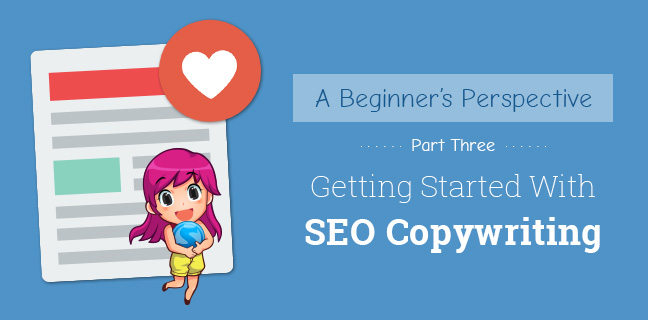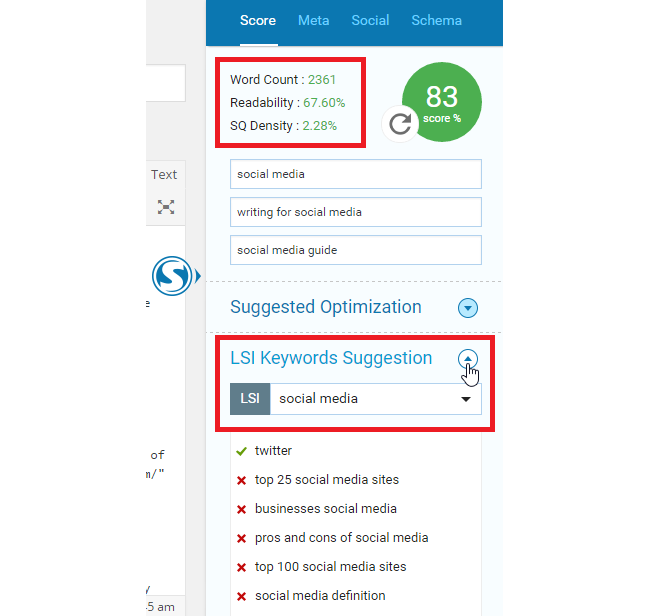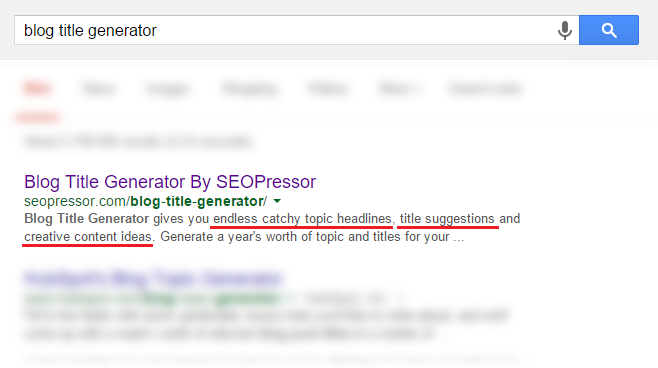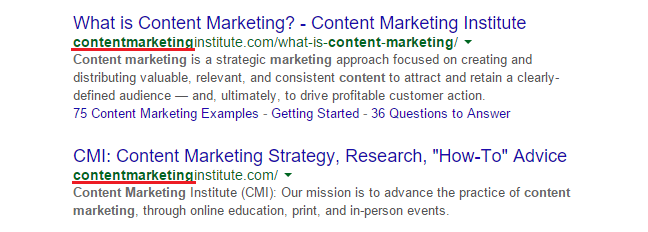Steph W. from SEOPressor


...help you check your website and tell you exactly how to rank higher?


87
score %
SEO Score

Found us from search engine?
We rank high, you can too.
SEOPressor helps you to optimize your on-page SEO for higher & improved search ranking.
By vivian on November 5, 2015

In last week’s post, I’ve talked about how to get started with SEO. I also mentioned that SEO and copywriting are both inseparable, but why is that so? In today’s post, I’ll discuss and share a few tips to create the best content for your website.
If you ever get confused about what copywriter is, fret not. You’re not the only one. As a journalism student, I can understand the importance of copywriting in the magazines and newspapers industry, but in SEO? It makes me wonder how are they related.
After some time, I realized that SEO copywriting is a different kind of copywriting, it is not straight copywriting. The purpose of SEO copywriting is to increase the relevancy of the content written.
Not only we are writing for the readers, but we also have to write for the search engines as well. We, as writers have to know what they are looking for, and then, provide them with what they want. In a nutshell, SEO copywriting helps to solve the readers’ questions with well-written content.
With two published articles in SEOPressor, I’m starting to get a hang of SEO copywriting. And here’s what I’ve learned from my experience:
To get started with SEO copywriting, you have to write your headline. Not just any normal headline, but this time, you have to include the keywords in it. By having relevant keywords in your headline, you will have a higher chance to rank when people are searching for it.

During my two-week training, I came to know that headlines are really important because it is the first thing that readers would notice. Headline serves as the ‘tour guide’ for your content, it decides where your content will lead to.
Let’s take a comparison of a good and bad headline:

Example #1

Example #2
Don’t you think the headline in example #2 sounds better? The choice of words made the headline sounds much more convincing because it is more specific compared to example #1.
It is very important to write catchy headlines to get the attention of the readers so that they will know what to expect and it can also increase the likelihood for them to actually read your content.
A good example of a captivating headline would be the one from Moz:

The headline is not only important to the readers, but it is also important for writers like us as it will steer our writing direction. Trust me, because I have gone through the stage where I just kept writing and forgot about the headline. In the end, I messed up the entire article. So, be sure to have a headline before you start writing!
Here’s how you can get more catchy and interesting headline ideas using Keyword Intelligence.
If you want to write about “social media tool”, type it in the Keyword Intelligence.
You can see there a few options to choose from; related keywords, content ideas, popular questions, and trending searches.
In the content ideas, you will see a list of phrases that you could probably use for your headlines.

When choosing and deciding which headline to use, you want to take a look at a few criteria: Do people actually search for this phrase? Have I included my target keyword in the headline? What is their intent?
Fortunately, you can use Keyword Intelligence to answer all those burning questions. First, you can sort the keyword by its volume to see which phrases have the most searches. Then, you can filter the content ideas to include your target keyword.

You would also be able to check what’s the intent behind each of the content ideas above. For example, searchers will have the intention to make a purchase when they search for “best social media tools”. This important insight can guide you in creating better content that can match their intent.
Try Keyword Intelligence for free here!
Now that you have a headline, it’s time to write the body of your article.
To get started, write your content with SEO in mind by applying enough keywords for Google to understand the context. You can also refer to my previous post where I mentioned on how keywords play a part in SEO.
Don’t forget to keep an eye on keyword density. You may think that you already have enough keywords, but it’s always safer to check the number of keywords used in an article. As you know, your article can’t contain excessive keyword density because including too many keywords may cause Google to penalize you.
To keep things in check, let me share with you guys a keyword density formula:

Let’s say you would like to achieve a keyword density of two percent in your article of 1000 words. Then, your keyword needs to appear at least twice for every 100 words (2 out of 100 words).
To have an in-depth understanding of keyword density, you can refer to Ben’s post where he particularly covered the entire post about keyword density.
Other than the keyword density formula, another way to maintain a healthy website is by using LSI (Latent Semantic Indexing) keywords. LSI Keywords are the similar keywords related to the main keyword that users search for on Google.
I know that LSI keywords may sound strange to you. To make it simple, you can refer to the screenshot below for a better understanding:

So now, you can avoid spamming too many of your main keywords by replacing it with LSI keywords and have more varieties in your post. You don’t have to worry about being penalized by Google anymore!
Still, if you find the concept of keyword density and LSI are complicated, you can use SEO tools such as SEOPressor (which is what we’re using here) to help you control the keywords usage and get more LSI keywords.

Or, if you have already published your content, you can check your semantic and keyword density using BiQ’sContent Intelligence.
Just enter your target keyword and page URL. Then, you can quickly see the percentages in the overview.

The semantic density tells you how semantically relevant your content is with your target keyword. While the keyword density shows how many times your target keyword is repeated in the content.
Give it a try! Check your content’s density for free here.
Not only you are writing for Google to recognize your content, you are also writing for humans to read. Therefore, you have to produce attractive and easy to read content. To do so, make sure to:
Use Interesting Visuals In Your Post
You should tell stories through pictures. As the saying goes, a picture is worth a thousand words. Our brains love visuals, which is why you need to include some visuals in your blog post because too much words will make the readers lose their interests.
According to Thomas Korte, our brains process better in visuals than text.

Not only the images are telling a story, but images are one of a good way for you to present statistics to prove a statement. In most cases, readers will find it boring if you just show them raw data. However, with interesting infographics or pie chart, things will be different.
For example:

I’m sure the image on the right will be more pleasing to your eyes because studies have shown that visuals and colors tend to leave us a better impression than words. Boring data like words are not so engaging compared to pictures. Therefore, remember to include some images in your blog post rather than having a post full of wordings.
Use Storytelling Technique
You can include your real life experience in the content because personal story contains emotions, and emotions are what making readers feel something. Readers need to relate to your story in order to get inspired. When they get inspired from your story, they will share your article to their family and friends.
But you should avoid talking too much about yourself. In this case, you can apply the KISS (Keep It Simple and Short) format when writing because readers will get bored if you’re using too many bombastic words and long sentences.
There are a few good examples of storytelling articles that you can refer to at here:
How To Lose Weight In 4 Easy Steps
This is an emotional piece, which truly touches my heart. Even my male friends who are not so sentimental are inspired by the writer. It’s really amazing how Aaron Bleyaert can relate losing weight to the girl who had his heart broken. Whether or not you want to lose weight, you should read the article on how Aaron expressed his emotions through storytelling method.
8 Content Marketing Lessons I’ve Learned In 6 Months
This article is written by Zhi Yuan from SEOPressor. In this post, he told us about his learning experience during the 6 months period since SEOPressor started content marketing. He also mentioned about the hardships that he faced and what he has learned. If you are new to content marketing, you should read this post as there are many interesting tips given.
Use Conversational Tone
When writing, be sure to write it the way you talk to a friend. It is also very important to use words like “you”, “I” and “we” because readers will feel like you’re talking to them.
Use a friendly tone so that it will be less boring to your readers. In this way, you’re creating a connection with the readers and they will feel more involved in your article. For example:
“Do not forget, Moments Cafe is closed on Sunday. The workers will be getting a day off.”
A better sentence to sound more conversational would be:
“Don’t forget, our shop is closed on Sunday. We’ll be getting a day off.”
Extra tip: Use Content Intelligence to understand your readers’ emotion when reading your content.
Content Intelligence will analyze each and every paragraph in your content and tells you what do the readers feel when reading your content. Just look at the example below:

This helps you to better understand what do they feel when reading a specific paragraph in your content. Analyze your content and see if it delivers the right ‘sentiment’ to your readers.
What do you feel when reading the paragraph above? Check it out at Content Intelligence.
Structure Your Headings
Most of the readers don’t read the entire content when they first stumbled upon your website. Instead, they skim through your article first. Readers will mostly skim through the bold, italic, and underline words or sentences. So, you have to make sure that the formatted words or sentences are giving the readers an idea of what your article is about.
Using subheadings in your article is another good way for readers to read easily as it guides the reading’s flow.

When your cotnent is clear and easy to understand, it will increase the readability. As a result, your readers may actually read and interact with the content you publish.
Once you publish your content, check your content readability here. This free tool will show you the readability grade for every paragraph.

When you’re done writing the content, the next thing to do is to write the meta description. Make it specific and relevant for readers and Google to understand your content better. Also, include keywords in your meta description to improve the relevancy. With a well written meta description, Google may choose to use it as a snippet that will lead to better click-through rate (CTR).
In SEOPressor, there is also a formula for us to write a meta description:
Short + Concise + Benefit + Call To Action (CTA) + Keywords = CTR

Last but not least, you have to plan the URL for your blog post because URL can actually affects your ranking in Google. This is also one of the reasons why I mentioned that you should include keywords in your headline, the same goes to your URL.
By including keywords in the URL, it makes it easier for Google to recognize your content, and then, show it to the readers who are looking for the subject.

Moving on to the last step before publishing, you must always remember to check your work. Go and make some coffee or tea, then sit in front of your laptop again. Clear your mind and imagine yourself as a reader. Read the article again and ask yourself:
I know it might be hard to criticize your own work because as writers, we all have our writer’s pride in us. But at the end of the day, we’re writing for the readers. Therefore, we should keep the readers in mind.
Once you have checked all the boxes above, then congratulations! You can now press the ‘Publish’ button.
Every time a reader visits your site, you literally have two-second to catch their attention, so be sure to hit the right spot.
With great and unique content, you can actually save hundreds or thousands of dollars in advertisements. I hope this SEO copywriting tips are useful to you guys and you can basically get the idea on why you can’t have copywriting without SEO and vice versa.
So now that you know how to have a perfectly optimized content, what’s next? It is important to know if your content is making a progress because it is telling you how is your business doing, whether if it’s good or bad. If it’s bad, where has it gone wrong?
If you would like to know how well your content performed, make sure to read my next post where I’ll be talking about how to measure SEO success.
Read the other series of ‘Beginner’s Guide To SEO’ here:
Updated: 27 December 2025


Save thousands of dollars (it’s 100x cheaper)

Zero risk of Google penalty (it’s Google-approved)

Boost your rankings (proven by case studies)
Rank High With This Link Strategy
Precise, Simplified, Fast Internal Linking.
